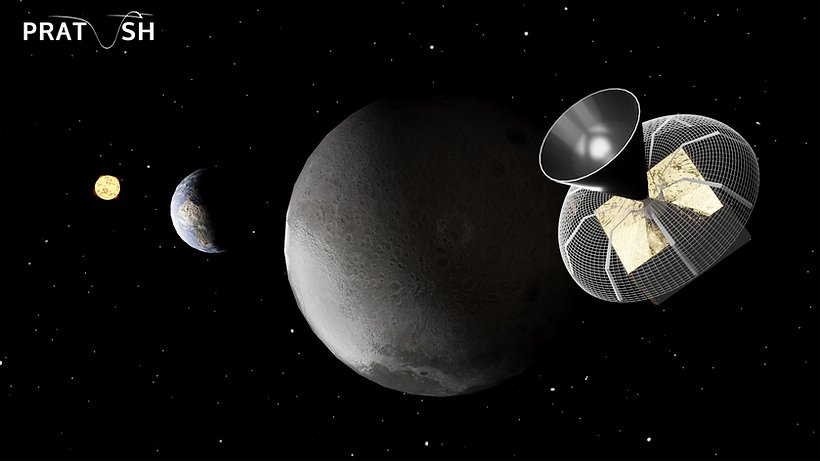RAMAN RESEARCH INSTITUTE


PRATUSH
Probing ReionizATion of the Universe using Signal from Hydrogen

PRATUSH (Probing ReionizATion of the Universe using Signal from Hydrogen) is a future radiometer in lunar orbit that will reveal the Cosmic Dawn of our Universe [1]. It will answer the question of when the first stars formed in our universe, the nature of the first stars, and study the light of Cosmic Dawn. PRATUSH will be the pioneering space telescope that will reveal, for the first time, the history of our infant Universe as it transformed after the Big Bang - from cold gas into stars and galaxies and the universe as we know it today.
Results from ground-based experiments will most certainly be plagued and limited by issues unique to a ground-based measurement: man-made radio-frequency interference (RFI), coupling of instrument response to ground characteristics, and atmospheric contaminants in the form of molecular absorption lines & ionospheric refraction, emission, and absorption. Low-level RFI and ionospheric effects, which are more pronounced at low frequencies, are a fundamental limitation to the detection of this cosmic signal from the ground. The only way to completely mitigate contamination from RFI, eliminate these impediments, and confidently detect this cosmic signal is via a space-based mission observing from the far side of the Moon.
PRATUSH will carry a wideband frequency-independent antenna, operating over the frequency band 55-110 MHz, a self-calibratable analog receiver, and a digital correlator with high spectral resolution. Each of these components will be custom designed such that the calibrated instrument response is spectrally smooth, devoid of spurious shapes that can confuse a signal detection. The target instrument sensitivity is at the level of a few millikelvins without being limited by any systematic features. This requires a dynamic range in bandpass calibration of one part in a million, which will be achieved with a multi-step calibration strategy involving bandpass calibration by in-situ injection of well-characterized broadband noise and on-sky calibration to characterize antenna properties and coupling of sky-power to receiver. The observing strategy of PRATUSH will be to continually observe large sky regions and record spectra of the beam-averaged radio emission with a high spectral resolution of 100 kHz.
The nominal lifetime of the payload will be two years to achieve a high signal-to-noise ratio with sufficient sky coverage. The preferred orbit for the payload will be a circumlunar orbit to enable measurement of the radio sky spectrum from the dark and far side of the Moon. Such an orbit would avoid the ionosphere and solar and terrestrial radio frequency interference, which are acknowledged as the major show stoppers from the ground. PRATUSH is currently funded for pre-project studies by the Indian Space Research Organization, with a working laboratory model reaching a sensitivity of 12.5 mK with 43 eight-hour runs data averaged and a limited shielded enclosure. Efforts are underway to implement a full system test with a customised RF-shielded enclosure and integration of the antenna at Gauribidanur Radio Observatory.
References:
[1] Sathyanarayana Rao, M., Singh, S., K. S., S., et al. 2023, ExA, 56, 741